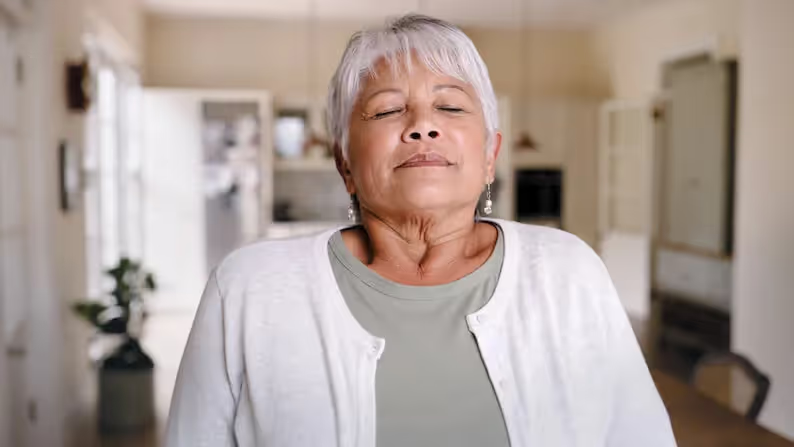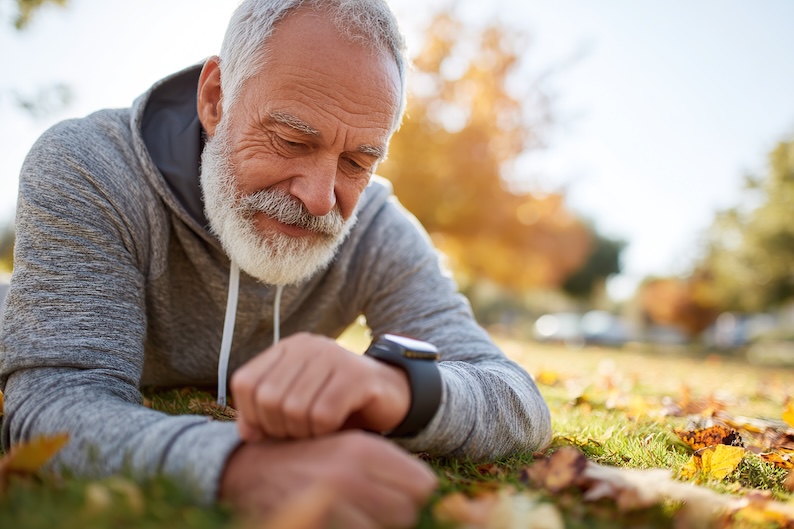Chronic obstructive pulmonary disease (COPD) is a common condition plaguing older adults that often goes undiagnosed. It's estimated that between 11 and 18 percent of adults aged 65 years or older are living with COPD.
COPD is a progressive disease that refers to a group of lung diseases that cause airflow blockage and breathing-related problems. Simply put, it is when there is damage to the lungs that results in difficulty breathing, causing you to feel short of breath.
Causes and Symptoms of COPD?
Smoking and air pollution are the two most common causes of COPD. And even though smoking is the number one cause, one in four people with COPD never smoked. Long-term exposure to lung irritants, such as secondhand smoke, chemicals, dust, and environmental fumes, leads to inflammation of the lungs which can result in pulmonary hypertension and airway remodeling.
Most people with COPD don't experience any noticeable symptoms until they reach their late 40s or 50s. However, as we age, our lung capacity begins to decline, and our diaphragm becomes weaker, thus decreasing our ability to inhale and exhale. This leads to many mistaking their COPD symptoms for signs of aging or another condition, such as asthma.
COPD symptoms include:
- Breathing difficulty
- Shortness of breath, especially during physical activities
- Wheezing
- Chest tightness
- A chronic cough that may produce mucus (sputum) Frequent respiratory infections
- Lack of energy
- Unintended weight loss
- Swelling in ankles, feet, or legs
People with COPD have an increased risk of developing heart disease, lung cancer, and various other chronic conditions. Although COPD worsens over time and is technically not curable, it can be treated. Symptoms can be managed and improved with lifestyle changes and breathing techniques to help with reducing shortness of breath. With proper management, people with COPD can experience a good quality of life and a reduced risk of other associated conditions.
Breathing Exercises for COPD
Again, while there is no cure for COPD, practicing deep breathing and other controlled breathing exercises can help mitigate symptoms, strengthen your lungs, and increase lung capacity. Here are some easy COPD breathing exercises you can do to improve your symptoms. Try doing these exercises at least four or five times a day for best results.
Diaphragmatic Belly Breathing
Your diaphragm is the primary muscle involved in breathing. People who suffer from COPD tend to overcompensate and rely on other muscles to breathe rather than their diaphragm. Diaphragmatic or abdominal breathing helps to retrain the diaphragm to work more effectively.
Step 1: Lie on your back, relax your shoulders, and place one hand on your chest and the other on your stomach.
Step 2: Breathe in deeply through your nose, feeling your stomach move outward.
Step. 3: Purse your lips and breathe out slowly through your mouth while pressing lightly on your stomach.
Step 4. Repeat
Pursed Lip Breathing
Pursed lip breathing is a great exercise to help reduce shortness of breath and increase airflow to the lungs.
Step 1: Keep your mouth closed and take a deep breath through your nose. (Inhale for two)
Step 2: Breathe out slowly through pursed lips. Don't force it; just breathe out slowly. (Exhale for four)
Deep Breathing
When air gets trapped in your lungs, you feel short of breath. Deep breathing can help to prevent that from happening.
Step 1: Sit or stand with your shoulders slightly back.
Step 2: Inhale deeply through your nose.
Step 3: Hold your breath for five seconds.
Step 4: Exhale deeply and slowly, letting out all the inhaled air.
Huff Cough
Mucus in your lungs is a common symptom of COPD. The huff cough is a breathing exercise that helps you to cough up and remove the built-up mucus from your lungs.
Step 1: Sit comfortably and inhale through your mouth. Try to take a deeper breath than normal.
Step 2: Blow out the air in three even breaths as you make the sounds, ha, ha, ha. Think of it as if you were trying to steam up a mirror.
Slow Your Breathing with Ease
COPD is a serious condition that should be properly diagnosed and treated. When left untreated, COPD in older adults can be life-threatening and even fatal. However, COPD is not a death sentence. With pulmonary rehabilitation, lifestyle changes, and at-home breathing exercises, you can go on to live a life filled with activity and excitement.
Don't let COPD dictate your life. Start breathing with ease today!




